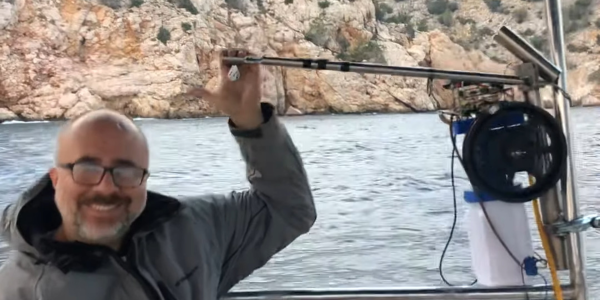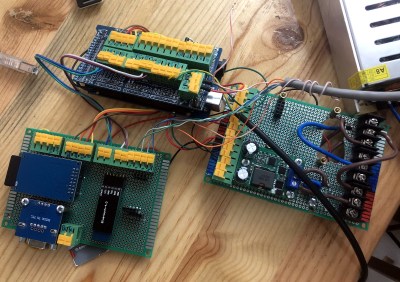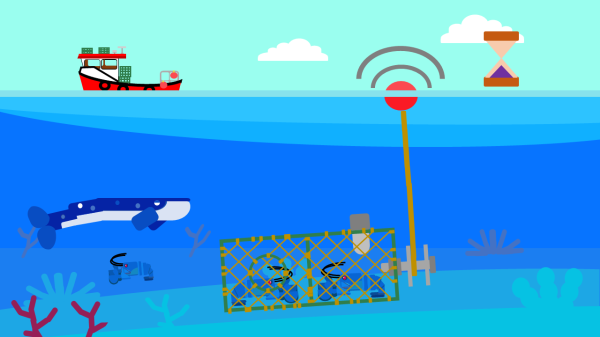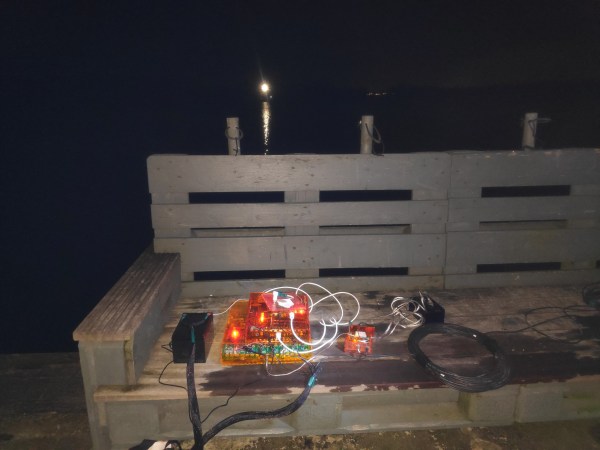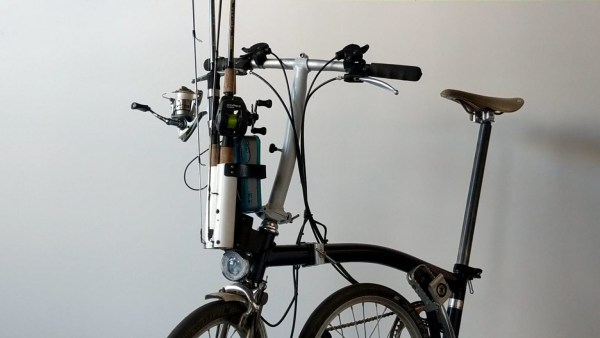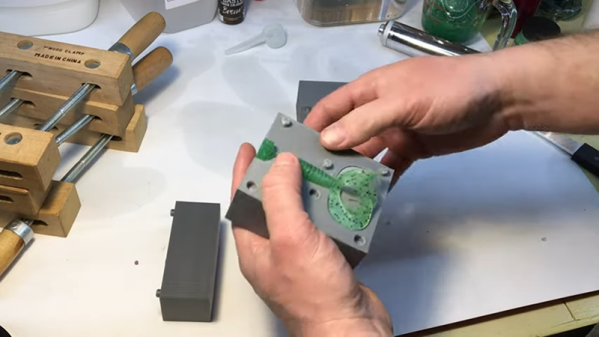Quiet electric trolling motors are great for gliding into your favorite fishing spot but require constant correction if wind and water currents are at play. As an alternative to expensive commercial GPS-guided trolling motors, [AlexAsplund] created Vanchor, an open source system for adding autopilot to a cheap trolling motor.
To autonomously control an off-the-shelf trolling motor, [Alex] designed a 3D printed steering unit powered by a stepper motor to attach to the original transom mount over the motor’s vertical shaft. A collar screwed to the shaft locks the motor into the steering unit when the motor is lowered. The main controller is a Raspberry Pi, which hosts a WiFi hotspot and web server for control and configuration using a smartphone. Using navigation data from an e-compass sensor and a marine GPS chart plotter, it can hold position, travel in a specified direction, or follow a defined route. [Alex] is also planning to add the option of using a GPS module instead of a commercial plotter.
For an estimated total of $300, including the motor, this seems like a viable alternative to commercial systems. Of course, it might be possible to add even more features by integrating the open source ArduRover autopilot, as we’ve seen [rctestflight] do on multiple autonomous vessels. You can also build your own open source chart plotter using OpenCPN, which rivals commercial offerings.




